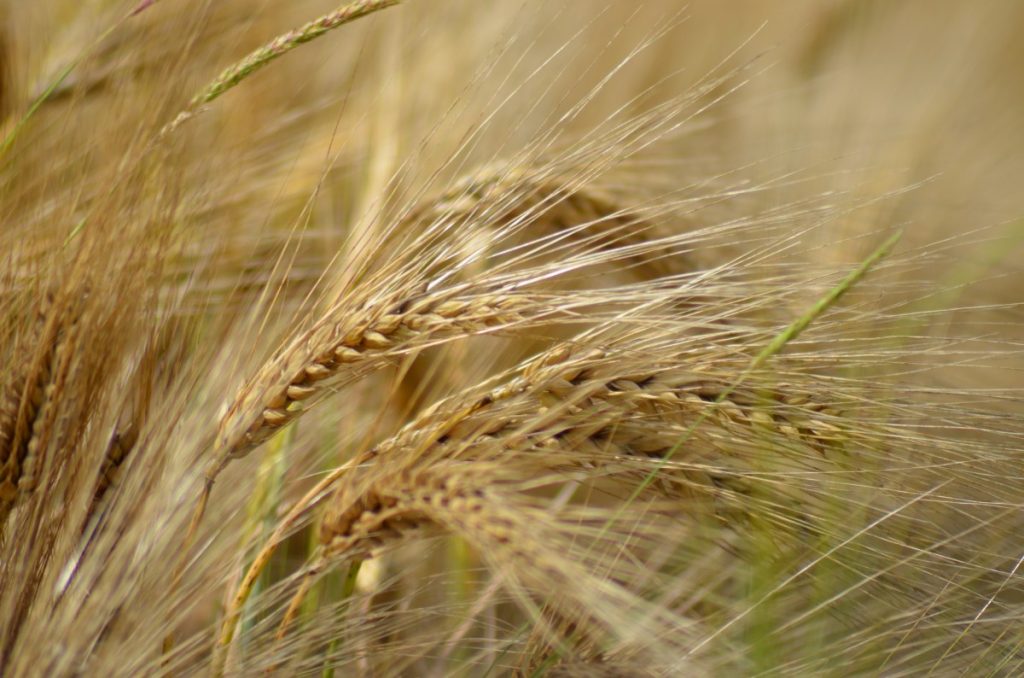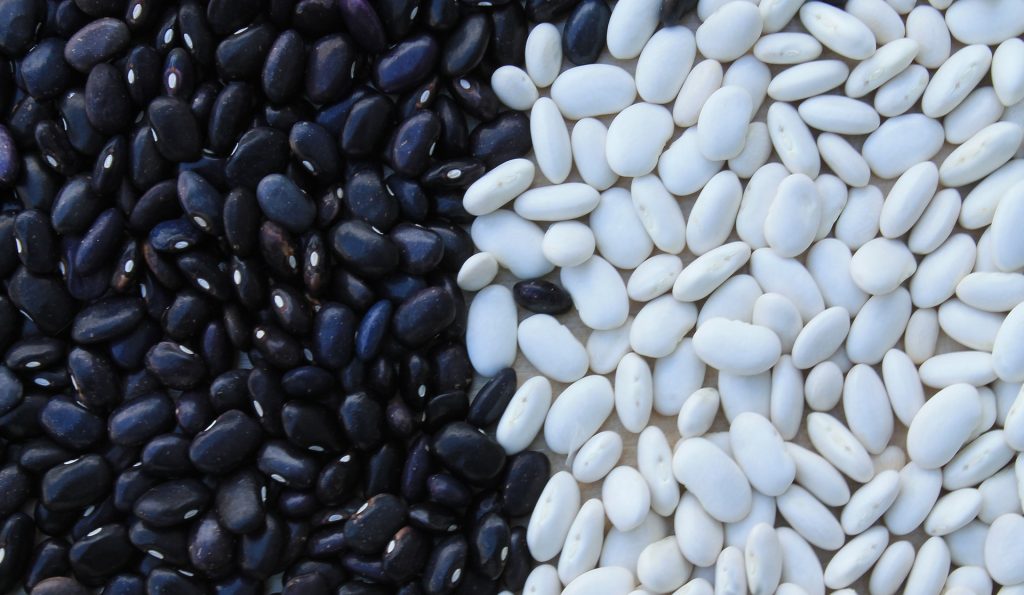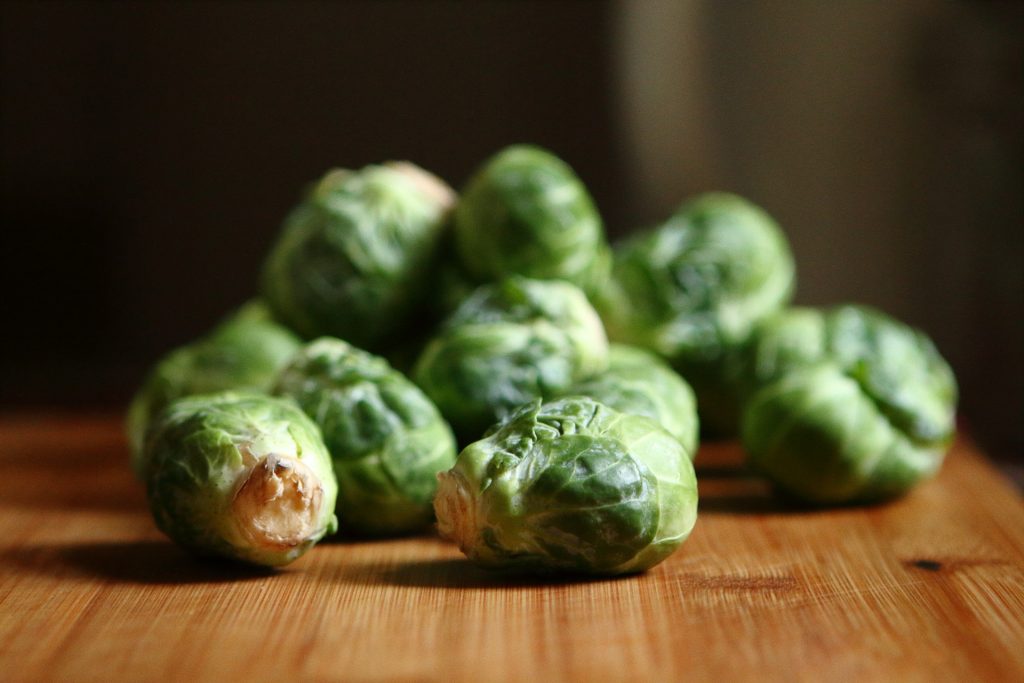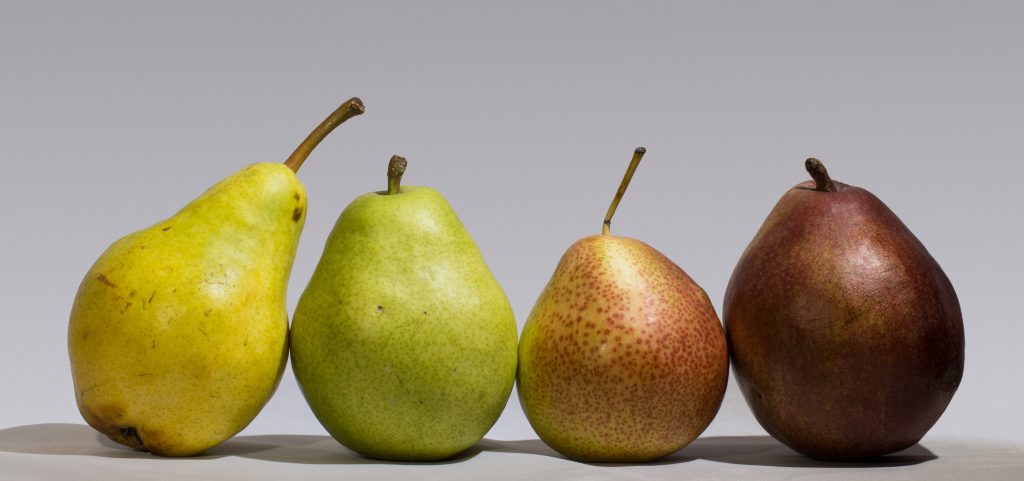This post may contain affiliate links. If you click on an affiliate link and buy something, I get a percentage of the sale. Find out more by reading my affiliate policy and disclosure.
Are you looking to add more soluble fibre to your diet? Soluble fibre has tons of health benefits, from regulating blood sugar to lowering cholesterol. The good news is that I’ve put together a list of 19 of the best soluble fibre foods you can incorporate into your diet today.
Want even better news? Foods that contain soluble fibre usually also have a ton of other nutrients AND taste delicious. Seriously, you can’t beat a fresh ripe pear or a tray of roasted brussels sprouts.
What is soluble fibre?
Let’s start with the basic. Soluble fibre is a type of dietary fibre that is soluble in water. It forms a gel-like substance in the body that slows down the digestive process. Soluble fibre has many health benefits, ranging from regulating blood sugar levels to lowering cholesterol levels!
I’ve written a whole post about the benefits of soluble fibre. Check it out!
How to increase the amount of fibre in your diet safely
Look, you don’t want to suddenly increase the amount of fibre you eat. That can lead to bloating, stomach cramps and digestive issues. Because fibre and gut health are so intertwined, you have to build up to it and give your digestive system a chance to adapt.
You’ll want to slowly increase the amount of high-fibre foods in your diet. Add an extra cup of beans a couple of times a week, start eating porridge for breakfast a couple of weeks after that, and then slowly add in some fresh fruit or extra servings of cruciferous veggies.
Don’t forget to drink more water! Both soluble and insoluble fibre needs water to absorb and help it move through the body. Eating lots of fibre without drinking enough water leads to a bad time!
19 of the best soluble fibre foods
The best sources of soluble fibre are whole grains, beans & legumes, nuts & seeds, vegetables and fruit. I’ve organised my list of soluble-fibre containing foods into these categories.
Eating a high-fibre diet that incorporates food from all of these categories will ensure you also eat a range of other nutrients, with all the corresponding health benefits.
If you can’t remember specific foods, just remember to aim for a range of whole grains, beans, nuts and seeds, vegetables and fruit every day.
Best whole grain sources of soluble fibre
Whole grains often jump to mind when you think of high-fibre foods. And indeed, they are great sources of roughage and both soluble and insoluble fibre.

Whole grains contain the entire grain – the bran, germ and endosperm.
Refined grains, in contrast, have been milled, which makes them finer in texture. However, refined grains have also been stripped of essential nutrients including fibre!
Always choose whole grains to get the most fibre for your buck.
Oats
Oats are one of the most famous sources of fibre. They contain a special type of soluble fibre called beta glucan. Beta-glucans support our health in two ways:
- They increase the viscosity of our food as it travels through our upper digestive tract.
- Beta-glucans also help regulate our blood sugar.
Choose old-fashioned ‘rolled’ oats or steel-cut oats for maximum fibre. Instant oats rarely perform as well in studies.
And if you’re looking to spruce up your morning porridge, check out my guide to the best porridge toppings!
Barley
Of all whole-grains, barley is highest in fibre. Common varieties contain about 17% fibre, but some varieties (such as Prowashonupana barley) reach 30g of fibre!
It’s another great source of beta-glucans, and according to the Whole Grains Council:
Recent research indicates that barley’s ability to control blood sugar may be exceptional
Whole Grains Council
Barley can be added to soups and stews, but can also make a flavourful side dish in its own right.
Best bean and legume sources of soluble fibre
Beans and legumes are another fantastic source of both soluble and insoluble fibre. As a rough rule of thumb, the ratio of fibre is about 1 gram of soluble to 3 grams of insoluble. This does vary a bit by bean though.

Most beans require pre-soaking before cooking, although lentils don’t.
Canned beans save time as they don’t need to be pre-soaked and contain about the same amount of nutrients. Canned beans do cost a bit more though.
If you opt for canned beans, keep an eye on the sodium levels. Salt and sugar is often added to canned beans!
Black beans
All beans contain plenty of fibre, but black beans contain the largest amount of soluble fibre. The soluble fibre in black beans is called pectin. By consuming foods high in pectin (along with plenty of water) you can reduce constipation and draw cholesterol containing bile out of the body.
Lima Beans
Lima beans contain almost as much soluble fibre as black beans, although less insoluble fibre. Plus, like navy beans (below) they contain folate and magnesium. The combination of folate, magnesium and fibre makes them a heart-attack fighting all-star.
Navy beans
A cup of navy beans provides an impressive 68% of your RDA for fibre. In addition to being an excellent source of fibre, they also provide folate and magnesium. The combination of high-fibre, folate and magnesium means navy beans are brilliant for protecting you against heart disease.
Kidney Beans
Like the other beans in this list, kidney beans contain the soluble fibre pectin. However, they also contain a mineral called molybdenum. Molybdenum helps the body process sulphites. If you’re sensitive to sulphites (a preservative found in processed meats), then kidney beans can help reduce the symptoms.
Lentils
Lentils are a great source of protein, but they are also packed with soluble fibre. Unlike other dried beans, they are also quick and easy to prepare as they don’t need to be soaked.
In addition to soluble fibre, lentils are a good source of iron.
Best nut & seed sources of soluble fibre
Nuts and seeds are more normally praised as a source for good fats and protein, but they can also be a surprisingly good source of fibre.

Flax seeds
Up to 40% of the fibre in flax seeds is soluble. It is the high soluble fibre context that makes them such a great binder in vegan baking!
They also contain more thiamine and copper than chia seeds (below), and contain less carbs if you are on a low-carb diet.
Chia Seeds
Chia seeds are famous for being the base ingredient of chia puddings. This is because they contain soluble fibre, which goes sticky when mixed with water. Although they contain less soluble fibre than flax seeds, chia seeds do contain less fat and slightly higher amounts of nutrients like selenium, calcium and phosphorus.
Hazelnuts
As well as being a source of around 3.3 grams of dietary fibre and 1.1g soluble fibre, hazelnuts are little powerhouses. They contain vitamin E, copper and magnesium, which reduce blood pressure and inflammation.
Best vegetable sources of soluble fibre
Cruciferous vegetables are one of the healthiest things you can add to your diet. So much so that Dr Greger says that:

Indeed, if you were to add only one thing to your diet, consider cruciferous vegetables.
Dr Greger (NutritionFacts)
In addition to fibre, cruciferous vegetables contain sulforaphane. Indeed, they are one of the only sources of this cancer-fighting, inflammation-reducing and lymphoma-preventing super-nutrient.
Brussels Sprouts
Love ’em or hate ’em, there’s no denying that brussels sprouts are a fantastic source of soluble fibre (like most cruciferous veg!)
They are also a great source of vitamin K, which helps with blood clotting and bone health.
Plus, as a vegetable, brussels are endlessly versatile, and can be boiled, steamed, roasted, fried, shredded or eaten whole.
Broccoli
Another cruciferous vegetable, more than half of the fibre in broccoli is soluble. It’s also less divisive than brussels, with almost everyone enjoying a serving of broccoli now and then.
Carrots
With 2.4 grams of soluble fibre per cup, carrots are an enjoyable way to add fibre to your daily diet. Plus, they contain beta-carotene which is converted to vitamin A, which helps improve night-vision.
Eating carrots really does help you see in the dark!
Sweet Potatoes
Sweet potatoes contain a form of soluble fibre called pectin. Pectin helps with feelings of fullness and prevents blood sugar spikes.
They are also a popular vegetable, with their bright orange flesh (another good source of beta-carotene!). They are also fantastic sources of potassium.
Turnips
Root vegetables like turnips contain plenty of fibre. A cup of turnips provides about 1.5g of soluble fibre. In addition, it’s another brilliant source of potassium.
Best fruit sources of soluble fibre
The reason fruit can be turned into jam or jelly is because of pectin, a soluble fibre. Different fruits have different amounts of pectin, but if you happen to know that a particular fruit is good for turning into jam, then you’ve almost certainly found a fruit that is a great source of soluble fibre!

Figs
Figs have long been used as a remedy for constipation. This will be in part due to their soluble fibre content.
Add figs to porridge made from oats for a double soluble fibre whammy! (And a delicious breakfast)
Apricots
Fresh apricots are higher in fibre than other stone fruits. According to SF Gate:
Apricots contain significant amounts of both kinds of fiber, but are especially high in the soluble type
Meg Campbell (SF Gate)
Avocados
Avocado toast has become synonymous with millennial eating habits. However, as always, it turns out us millennials are onto something.
Avocados are superfoods packed with good fats, vitamin K, Vitamin C, folate and potassium. They are also fab sources of soluble fibre, with 4.2 grams per avocado.
So enjoy your avocado toast. Just maybe don’t instagram it? We only need so many photos of avocado toast.
Pears
Confession: pears are my favourite fruit. You can keep your strawberries and plums – nothing can beat the taste of perfectly ripe pear and the juices running down your chin.
Luckily, pears are also great sources of soluble fibre (about 20% of the fibre in a pear is soluble).
There you have it – 19 fantastic sources of soluble fibre foods.
A quick summary of the 19 soluble fibre foods:
- Oats
- Barley
- Black beans
- Lima beans
- Navy beans
- Kidney beans
- Lentils
- Flax seeds
- Chia seeds
- Hazelnuts
- Brussels sprouts
- Broccoli
- Carrots
- Sweet potatoes
- Turnips
- Figs
- Apricots
- Avocados
- Pears
What is your favourite food from that list? (Mine is definitely pears)

Great listing of good healthy foods, all of which i enjoy eating.
[…] Discover the foods that are high in soluble fibre. […]
Quote “Of all whole-grains, barley is highest in fibre. Common varieties contain about 17% fibre, but some varieties (such as Prowashonupana barley) reach 30g of fibre!”
This is meaningless. You cannot compare a ratio to an absolute amount. If you’re trying to tell me that Prowashonupana barley has 30g of fibre per 100g, then write it as 30%. If you can’t tell the story accurately, how can I believe the rest of your article?